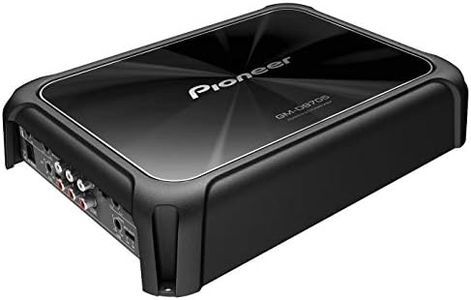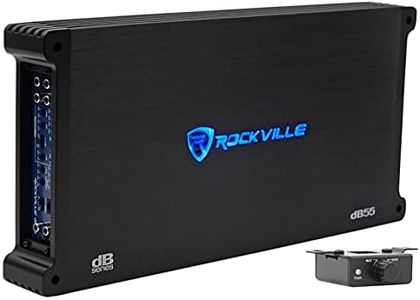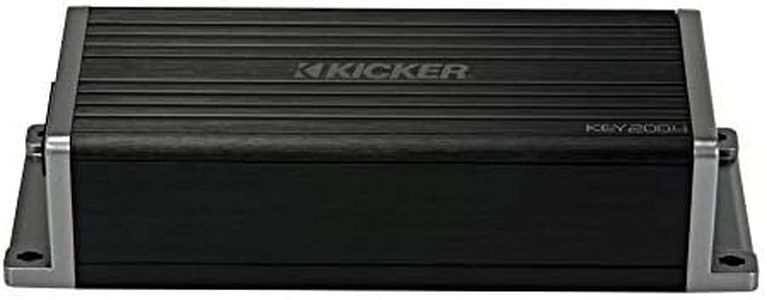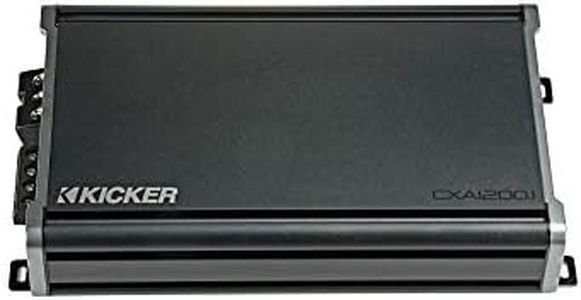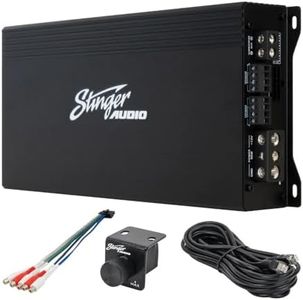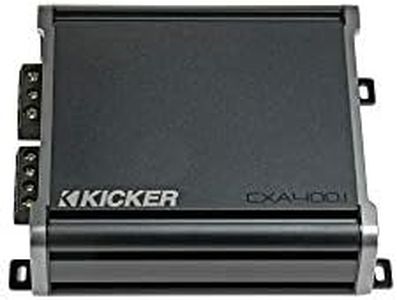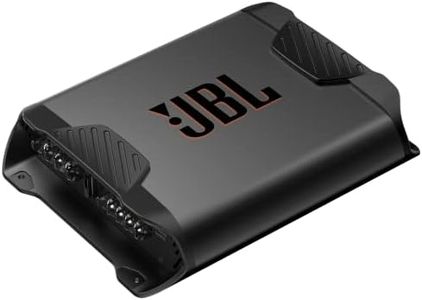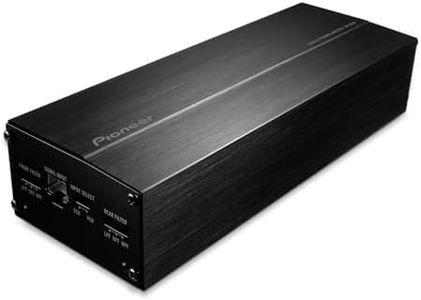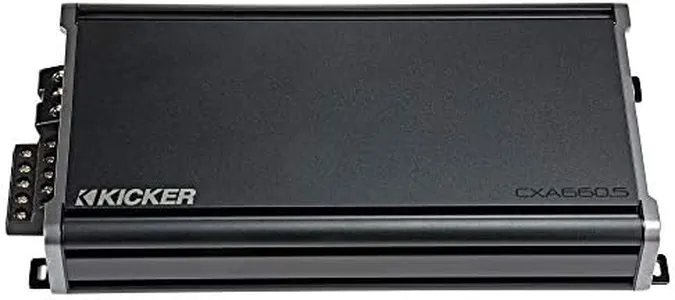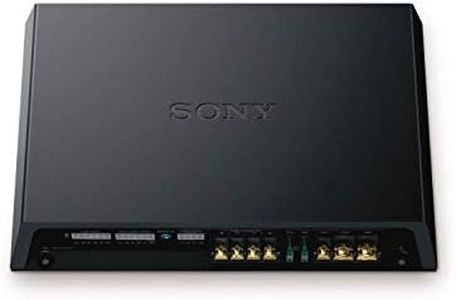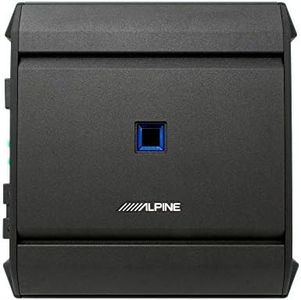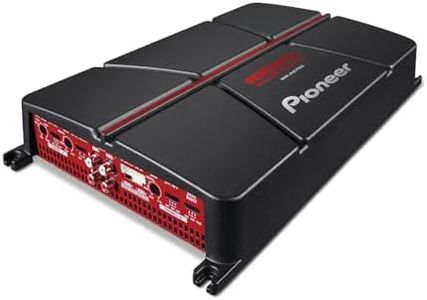We Use CookiesWe use cookies to enhance the security, performance,
functionality and for analytical and promotional activities. By continuing to browse this site you
are agreeing to our privacy policy
10 Best Car Amplifiers
From leading brands and best sellers available on the web.By clicking on a link to a third party's website, log data is shared with that third party.
Buying Guide for the Best Car Amplifiers
When you're looking to buy a car amplifier, it's important to understand what you want from your car audio system. Amplifiers boost the audio signal, giving you greater volume, clarity, and power for your speakers or subwoofers. Before you buy, think about what you listen to, how loud you want your music, and what kind of speakers or subwoofers you already have. Matching your amplifier to the rest of your system ensures the best performance and avoids damaging your equipment. Let's look at some of the main specs you'll come across and how they matter for your specific needs.Power Output (Wattage)Power output is the amount of electrical power the amplifier sends to your speakers, usually measured in watts (W). This is essential because the more power, the louder and clearer your audio can be without distortion. Power output is often listed as RMS (continuous power) and peak power (maximum). For smaller speakers or moderate listening, lower wattage is sufficient, while larger speakers or subwoofers and higher volume needs require more wattage. Make sure the amp's RMS rating matches or slightly exceeds your speaker's rated RMS for optimum performance and to prevent damage.
Number of ChannelsChannels represent how many separate speakers or subs the amplifier can power independently. Common configurations are mono (one channel for subwoofers), 2-channel (for two speakers), 4-channel (for four speakers), or 5/6 channels for complex setups. Choosing the right number of channels depends on how many speakers or subwoofers you plan to connect. For pure bass, a mono amp is ideal, while a 4-channel amp is popular for upgrading all the car's door speakers.
Impedance Compatibility (Ohms)Impedance, measured in ohms, is the resistance your speakers or subwoofers provide to the amplifier. It's critical because amps and speakers need to be matched in impedance (like 2, 4, or 8 ohms) for safe and optimal operation. Lower impedance draws more power, so if you want maximum output, look for an amplifier that can handle lower ohm ratings like 2 ohms, but always confirm your speaker's rating to avoid overheating or damage.
Signal-to-Noise Ratio (SNR)Signal-to-noise ratio describes how much background noise the amplifier adds compared to the actual audio signal. It's measured in decibels (dB), and a higher number means cleaner sound. SNR becomes vital if you value crisp, clear sound, especially during quiet music passages. For casual listeners, this spec might be less critical, but audiophiles often look for SNRs above 90 dB for the best experience.
Built-in Filters (High-pass, Low-pass, Bass Boost)Filters in an amplifier help control what frequencies reach each speaker. High-pass filters let only treble and mid frequencies go to smaller speakers, protecting them from bass overload. Low-pass filters direct only bass to the subwoofer. Bass boost enhances low-end frequencies for a punchier sound. Choosing the right filters lets you tailor your sound and protect your equipment. If your system mixes speakers and subs, look for amplifiers with adjustable filters and settings to customize your setup.
Input Types and CompatibilityAmplifiers can accept signals through different input types: RCA for aftermarket head units, high-level/speaker-level for factory systems. It’s important to ensure your chosen amp can connect to your car stereo without needing extra adapters. If you’re upgrading a stock system, look for amplifiers with high-level inputs for easier integration.
Physical Size and CoolingAmplifiers come in a range of sizes, and their location in your vehicle can affect installation. Some are compact enough to hide under seats, while larger amps may need a spot in the trunk. Larger amps may also generate more heat, so cooling features like heat sinks or fans are important for long-term reliability. Measure your available space and consider the amp's installation needs to avoid headaches later.
